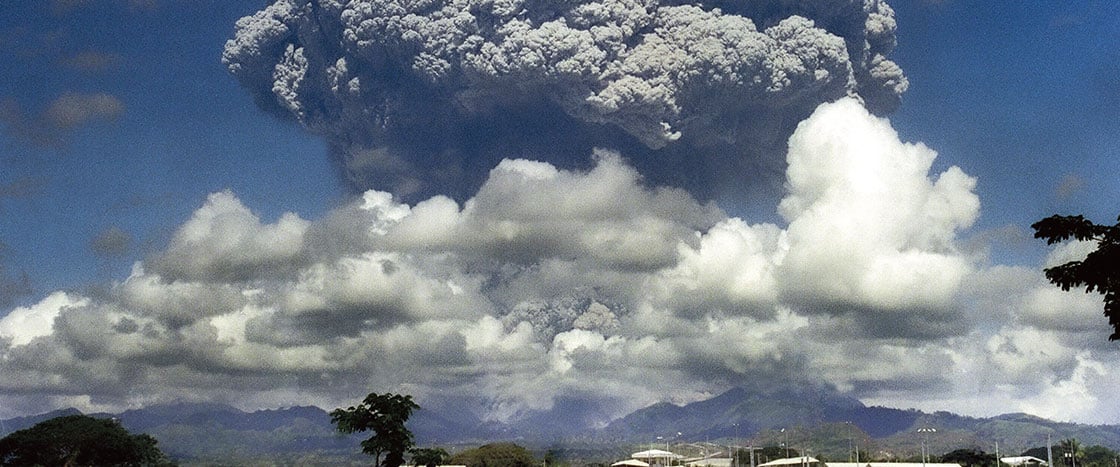The eruption instantly killed at least 12,000 people living on and around Mount Tambora. Ash and lava ruined the island’s soil and poisoned its rivers and streams. Rice paddies were destroyed. No fruits or vegetables would grow. There were no fish to catch; almost every animal had been killed. Trapped without food on their ruined lands, more than 90,000 people on Sumbawa and the nearby island of Lombok slowly starved to death.
The eruption of Tambora in 1815 was the deadliest and most powerful volcanic eruption in human history. Its explosive energy was 10 times stronger than that of Krakatoa, history’s most famous volcano, which erupted in 1883, also in what is now Indonesia.
And yet, incredibly, few people outside the blast zone learned about this terrible disaster. News and information traveled very slowly in 1815. The only way to get a letter (or a person) across oceans was on a sailing ship. The voyage from Sumbawa to New York or London would have taken perhaps four months.
Eventually, reports of the eruption did make it overseas, but few people paid attention. Somehow, the deadliest volcano in history was ignored by most of the world—and then forgotten.
What people were paying attention to a year later, in 1816, was the terrible weather—snowstorms in the summer, floods that turned wheat fields into lakes, frosts that blackened millions of acres of farmland around the world. Farmers up and down the East Coast lost their crops. In Europe, farmers grew desperate. In Paris, mobs of people broke into warehouses where grain was stored, risking their lives to steal sacks of flour. In China, starving families could no longer feed their children. Floods in India triggered an outbreak of a disease called cholera, which killed millions.

